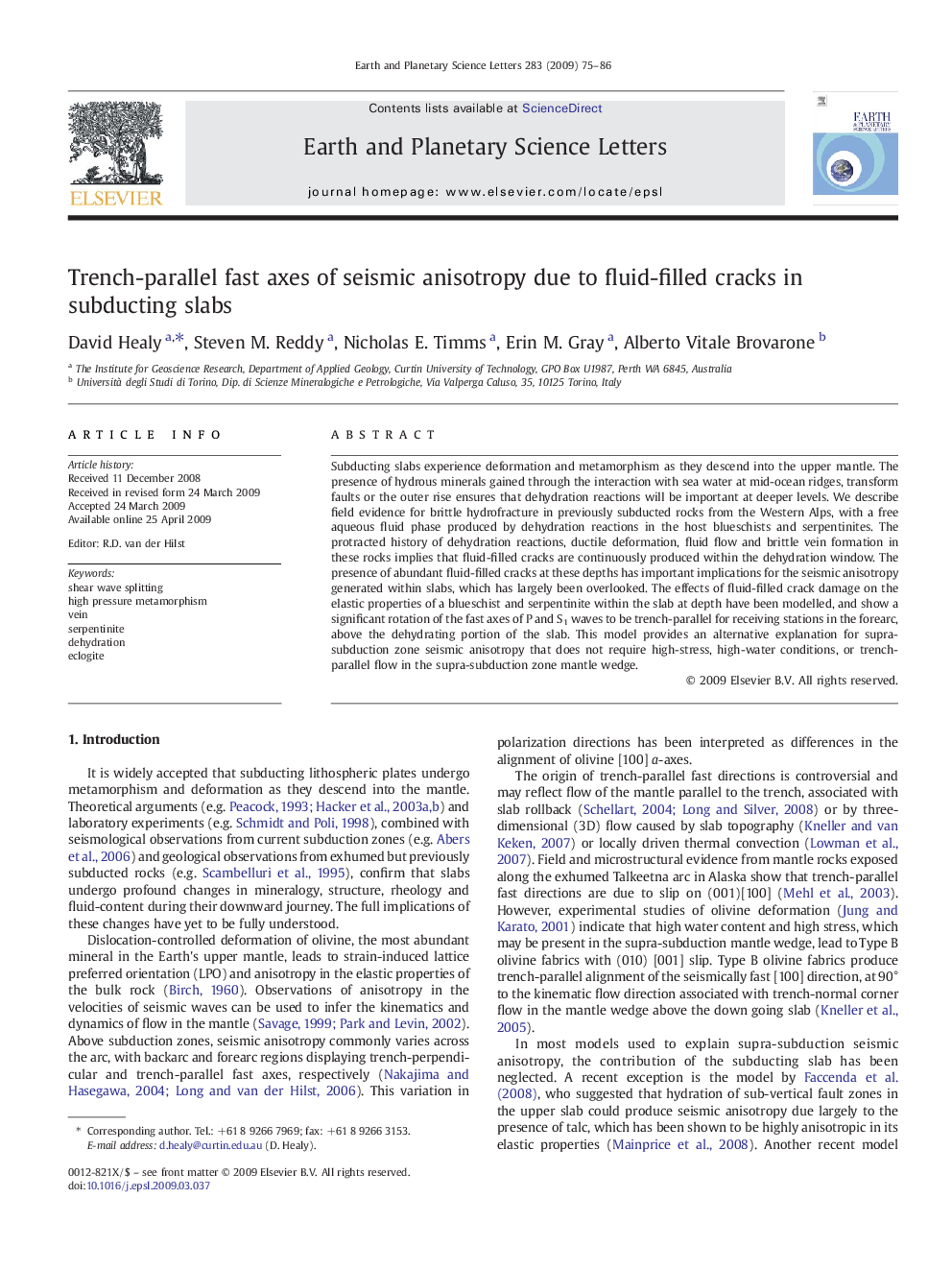| Article ID | Journal | Published Year | Pages | File Type |
|---|---|---|---|---|
| 4679027 | Earth and Planetary Science Letters | 2009 | 12 Pages |
Subducting slabs experience deformation and metamorphism as they descend into the upper mantle. The presence of hydrous minerals gained through the interaction with sea water at mid-ocean ridges, transform faults or the outer rise ensures that dehydration reactions will be important at deeper levels. We describe field evidence for brittle hydrofracture in previously subducted rocks from the Western Alps, with a free aqueous fluid phase produced by dehydration reactions in the host blueschists and serpentinites. The protracted history of dehydration reactions, ductile deformation, fluid flow and brittle vein formation in these rocks implies that fluid-filled cracks are continuously produced within the dehydration window. The presence of abundant fluid-filled cracks at these depths has important implications for the seismic anisotropy generated within slabs, which has largely been overlooked. The effects of fluid-filled crack damage on the elastic properties of a blueschist and serpentinite within the slab at depth have been modelled, and show a significant rotation of the fast axes of P and S1 waves to be trench-parallel for receiving stations in the forearc, above the dehydrating portion of the slab. This model provides an alternative explanation for supra-subduction zone seismic anisotropy that does not require high-stress, high-water conditions, or trench-parallel flow in the supra-subduction zone mantle wedge.
